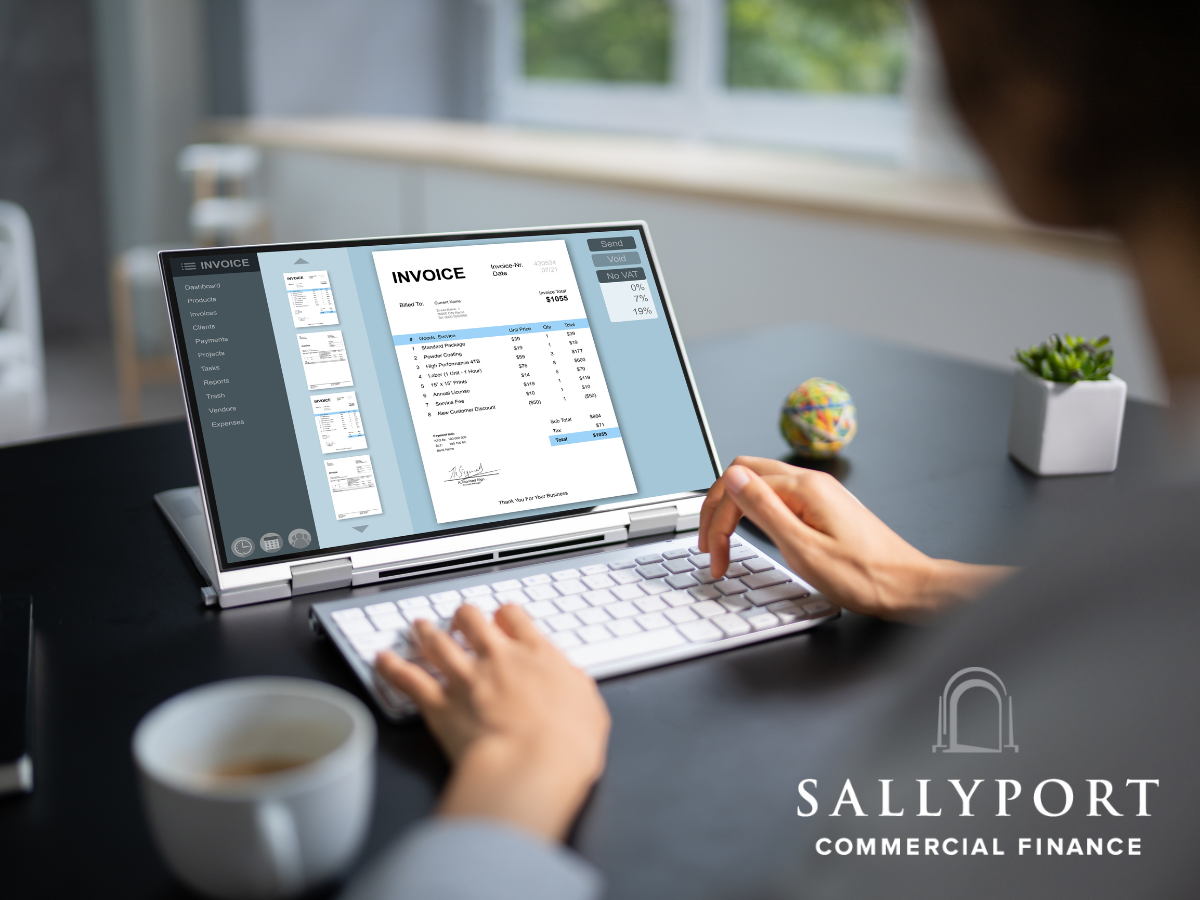Articles & Videos
A Guide to Credit Terms for Business

Credit terms are a fundamental aspect of business operations, influencing relationships between companies, cash flow management and impacting overall financial health. Understanding the intricacies of credit terms is essential for any business that offers or receives credit in its transactions. This guide will explore what credit terms mean, their importance, common types and potential pitfalls for businesses to avoid.
What Are Credit Terms?
Credit terms refer to the conditions under which a seller extends credit to a buyer of their products or services. These terms specify how long a buyer has to pay an invoice and may include incentives for early payment. Credit terms are typically represented in shorthand notations, such as “Net 30”, “1/10 Net 30” and “2/10 Net 30,” which outline the payment period and any potential early payment discounts.
Key Components of Credit Terms
- Payment Period: The time allowed for the buyer to pay the invoice.
- Discount Terms: If offered, this includes the percentage discount and the timeframe in which the discount applies.
- Interest or Late Fees: Penalties applied for late payments, often expressed as a percentage of the outstanding amount.
Why Are Credit Terms Important to Businesses?
Facilitating Sales
Credit terms make transactions more attractive to buyers by providing flexibility. This can increase sales volume and foster stronger customer relationships. For certain businesses and industries, extending credit terms may be the only way to remain competitive.
Cash Flow Management
For sellers, extending credit allows for steady cash flow. However, it also requires careful management to avoid liquidity issues, especially when customers delay payments.
Competitive Advantage
Offering favorable credit terms can give businesses a competitive edge in industries where buyers rely on extended payment periods to manage their operations.
Building Trust
Credit terms demonstrate trust between trading partners and help establish long-term relationships.
Common Types of Credit Terms
There are several standard credit terms, each tailored to meet different business needs. Understanding these terms is crucial for both buyers and sellers to manage their cash flow effectively.
1. Net 30
- Definition: The buyer must pay the full invoice amount within 30 days.
- Use Case: Commonly used across industries, especially in B2B transactions.
- Impact: Provides a reasonable timeframe for the buyer to manage their cash flow, while ensuring the seller receives payment in a predictable period.
2. Net 60 and Net 90
- Definition: Payment is due within 60 or 90 days.
- Use Case: Typically offered by large corporations or businesses dealing with government contracts.
- Impact: Offers greater flexibility for buyers but may strain the seller’s cash flow.
3. 2/10 Net 30
- Definition: The buyer receives a 2% discount if the invoice is paid within 10 days; otherwise, the full amount is due within 30 days.
- Use Case: Encourages early payment to improve the seller’s cash flow.
- Impact: Sellers receive payment sooner, often offsetting the cost of the discount with faster cash availability.
Variations of 2/10 Net 30 payment terms follow the same basic structure but adjust the discount percentage, the early payment period, or the overall payment period to suit different business needs. Here are some common variations:
1/10 Net 30:
Offers a 1% discount if payment is made within 10 days, with the full amount due in 30 days.
Ideal for businesses that want to encourage early payments but at a lower cost than the 2% discount.
2/15 Net 45:
Provides a 2% discount for payment within 15 days, with the full amount due in 45 days.
Common in industries where longer payment periods are standard, but the seller wants to incentivize earlier payments.
3/5 Net 30:
Offers a 3% discount for payment within 5 days, with the full amount due in 30 days.
Designed for businesses prioritizing rapid payment turnaround, offering a more substantial discount to entice customers.
1/15 Net 60:
Provides a 1% discount if payment is made within 15 days, with the full amount due in 60 days.
Useful for businesses extending longer credit terms while maintaining some incentive for early payment.
2/20 Net 60:
Offers a 2% discount for payment within 20 days, with the full amount due in 60 days.
Balances longer terms with a moderate incentive to improve cash flow sooner.
These variations allow businesses to customize payment terms based on industry practices, cash flow requirements and customer expectations.
4. Cash on Delivery (COD)
- Definition: Payment is made at the time of delivery.
- Use Case: Common for smaller or high-risk transactions.
- Impact: Eliminates credit risk but may limit sales to customers without immediate liquidity.
5. Advance Payment
- Definition: Payment is made before goods or services are delivered.
- Use Case: Used in custom or high-value transactions where upfront capital is necessary.
- Impact: Guarantees cash flow for the seller but may deter buyers due to upfront costs.
What Does Net 30 Payment Terms Mean?
Net 30 is a payment term that requires the buyer to pay the full invoice amount within 30 days of the invoice date. This arrangement offers a balance of flexibility and predictability, making it the most widely used method for businesses extending credit. For sellers, Net 30 provides a structured timeframe for receiving payments, allowing them to plan their cash flow with a degree of certainty. For buyers, it offers a reasonable grace period to manage their finances or generate revenue from purchased goods before payment is due. Its popularity stems from its simplicity and versatility, accommodating the needs of businesses across various industries while fostering trust and long-term customer relationships.
Impact of Credit Terms on Cash Flow
The credit terms a business chooses to offer or accept, significantly influence its cash flow position.
Positive Impacts
- Improved Relationships: Flexible credit terms can foster loyalty and repeat business.
- Predictable Cash Flow: Well-structured terms help businesses forecast revenue accurately.
- Increased Sales: Offering terms like Net 30 can attract more buyers.
Negative Impacts
- Delayed Payments: Extended terms like Net 90 can create cash flow gaps for sellers.
- Liquidity Issues: Businesses that offer long payment terms but have short supplier terms risk running out of working capital for day-to-day operations.
- Bad Debt: Extending credit to unreliable customers increases the risk of non-payment.
- Profitability: Whilst offering discounts for prompt payments can certainly enhance short-term liquidity, it can hurt profit margins over time so a careful balance is needed.
Pitfalls of Offering Extended Credit Terms
Businesses that offer longer payment terms can face specific challenges, especially when their own suppliers demand quicker payments.
- Cash Flow Mismatch – When accounts receivable exceed accounts payable, businesses may struggle to meet their obligations.
- Increased Debt – Relying on loans, overdrafts or Merchant Cash Advances to cover shortfalls can lead to high-interest costs.
- Operational Strain – Late payments from customers can delay growth initiatives or daily operations.
- Credit Risk – Extending terms without proper vetting increases exposure to default risks.
How to Mitigate Credit Term Challenges
Extending credit to customers in the right way will look different for each business, however it’s a set of processes that may include;
Customer Credit Checks
Thorough credit assessments should be conducted before offering extended terms to new customers.
Invoicing and Follow-Up
To ensure prompt payment, the business must ensure timely invoicing and establish clear payment reminders and follow-up processes for non-payment.
Negotiating Terms with Suppliers
If the business is able to align payment terms with its own suppliers, it can negate or reduce cash flow mismatches although this can be near impossible in many industries.
Factoring and Invoice Financing
Consider selling invoices to third parties at a discount to receive immediate cash which provides a more even flow of funds, to cover seasonal fluctuations or address the misalignment between accounts payable and receivable.
Advantages of Alternative Finance
When a business faces cash flow issues due to mismatched credit terms, alternative finance can be a lifesaver. These solutions provide quick access to funds without the lengthy approval processes of traditional loans.
Invoice Factoring
- What is it? – Selling accounts receivable to a third party at a discount for immediate cash.
- What’s the Benefit? – Reduces reliance on customer payments to maintain operations.
Invoice Discounting
- What is it? – Using invoices as collateral for short-term loans.
- What’s the Benefit? – Retains customer relationships while solving cash flow problems.
Business Lines of Credit
- What is it? – A revolving credit line to draw funds as needed.
- What’s the Benefit? – Provides flexibility to cover expenses during cash flow gaps.
Supply Chain Financing
- What is it? – Early payments to suppliers based on buyer-approved invoices.
- What’s the Benefit? – Strengthens supplier relationships while ensuring smooth operations.
Choosing Credit Terms Wisely
Credit terms are a vital part of business operations, balancing sales growth and financial stability. Understanding the various types of credit terms, their impact on cash flow, and potential pitfalls helps businesses make informed decisions. While extended terms can boost sales, they may also strain cash flow if not carefully managed.
For businesses facing challenges due to mismatched payment cycles, alternative financing options offer a practical solution. By leveraging tools like invoice factoring or supply chain financing, businesses can maintain liquidity, foster growth and strengthen relationships with both customers and suppliers.
Sallyport services help businesses to unlock sustainable growth and achieve long-term success; not only with tailored alternative funding solutions but with our value-added services which support business owners in choosing and managing their credit terms wisely. Reach out today to find out how we can help.
Search
News
$500K Boost: Sallyport Helps Meat Processor Thrive
At Sallyport, we believe in fueling the ambitions of business owners with the financial support they need to thrive. We’re…
Read More$1,750,000 to Keep Oilfield Businesses Flowing
At Sallyport, we’re committed to helping businesses overcome cash flow challenges and achieve their long-term goals. We’re excited to announce…
Read MoreArticles
Adapting Business for the New Normal
Small businesses have an instinctive ability to be able to adapt to changing economic and market conditions and at no…
Read MoreCould Trade Credit Insurance Save Your Business?
Trade credit insurance or accounts receivable insurance is a type of corporate insurance policy within the Property and Casualty business…
Read MoreVideos
What is Factoring?
Here we explain what exactly factoring is and how we can help your cash flow…
View NowAmerican Business Women’s Day
Sallyport Commercial Finance Celebrates American Business Women’s Day
View Now



